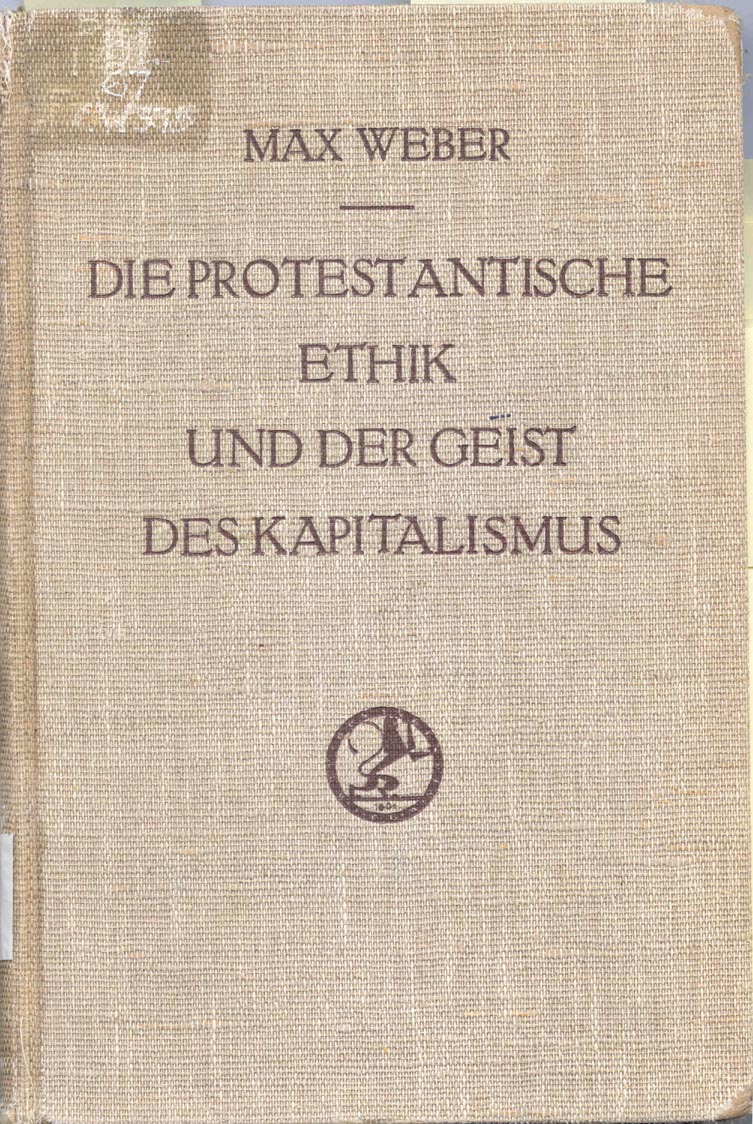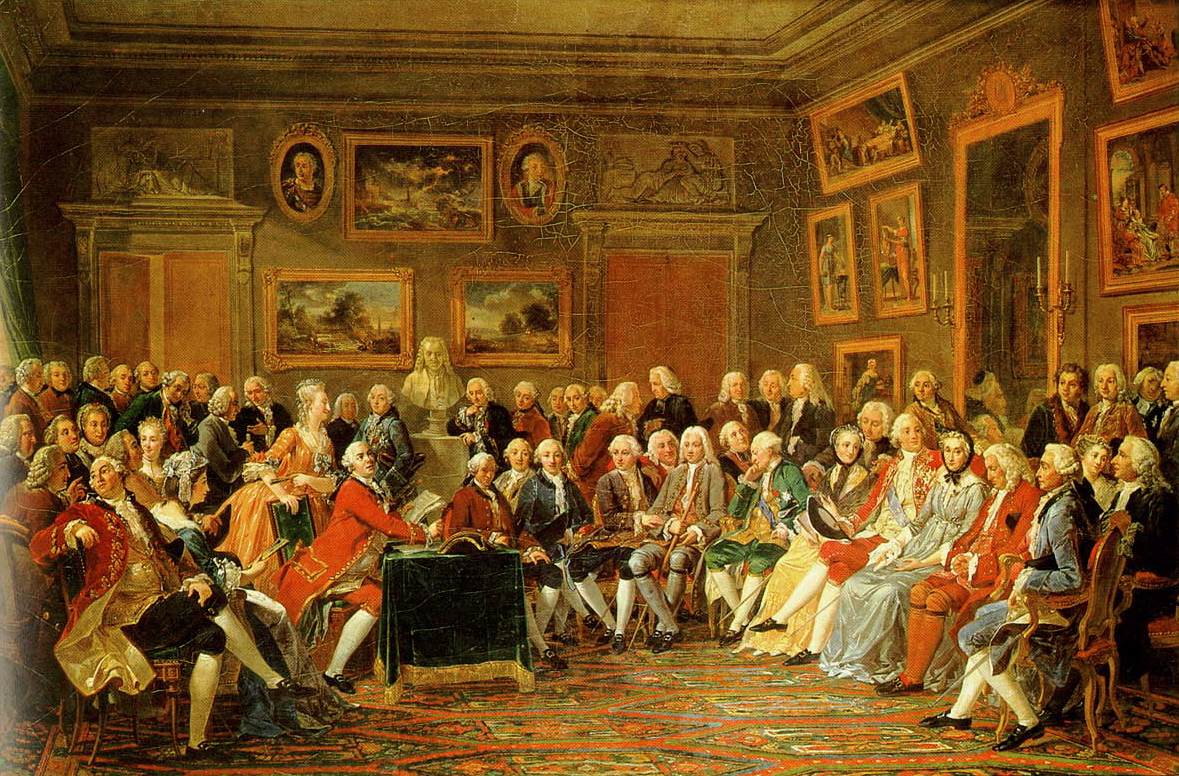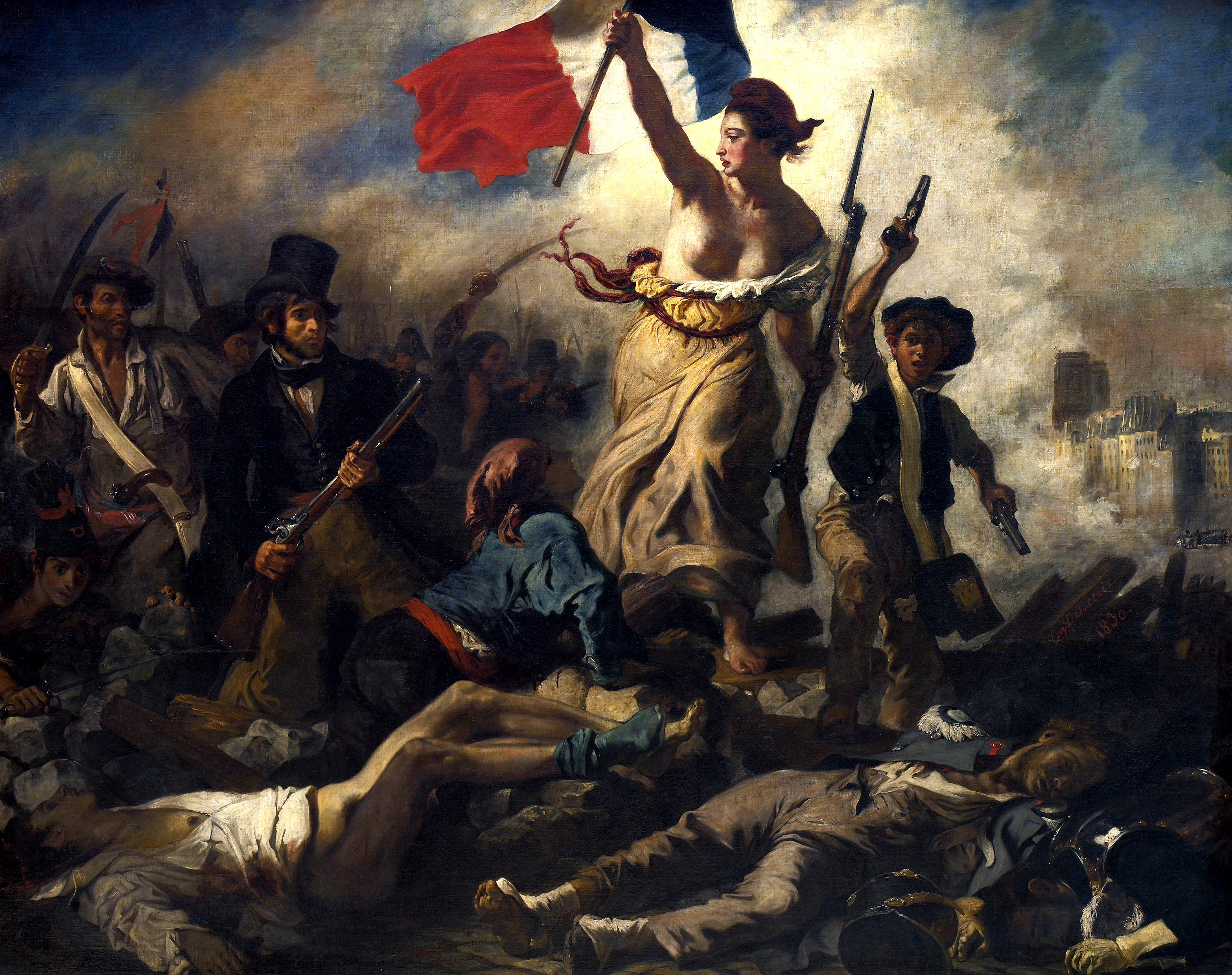|
Modernity
Modernity, a topic in the humanities and social sciences, is both a historical period (the modern era) and the ensemble of particular socio-cultural norms, attitudes and practices that arose in the wake of the Renaissancein the "Age of Reason" of 17th-century thought and the 18th-century "Enlightenment". Some commentators consider the era of modernity to have ended by 1930, with World War II in 1945, or the 1980s or 1990s; the following era is called postmodernity. The term " contemporary history" is also used to refer to the post-1945 timeframe, without assigning it to either the modern or postmodern era. (Thus "modern" may be used as a name of a particular era in the past, as opposed to meaning "the current era".) Depending on the field, "modernity" may refer to different time periods or qualities. In historiography, the 16th to 18th centuries are usually described as early modern, while the long 19th century corresponds to " modern history" proper. While it includes a ... [...More Info...] [...Related Items...] OR: [Wikipedia] [Google] [Baidu] |
Modernization
Modernization theory is used to explain the process of modernization within societies. The "classical" theories of modernization of the 1950s and 1960s drew on sociological analyses of Karl Marx, Emile Durkheim and a partial reading of Max Weber, and were strongly influenced by the writings of Harvard sociologist Talcott Parsons. Modernization theory was a dominant paradigm in the social sciences in the 1950s and 1960s, then went into a deep eclipse. It made a comeback after 1991, when Francis Fukuyama wrote about the end of the Cold War as confirmation on modernization theory and more generally of universal history. But the theory remains a controversial model. Modernization refers to a model of a progressive transition from a "pre-modern" or "traditional" to a "modern" society. Modernization theory suggests that traditional societies will develop as they adopt more modern practices. Proponents of modernization theory claim that modern states are wealthier and more powerful an ... [...More Info...] [...Related Items...] OR: [Wikipedia] [Google] [Baidu] |
Postmodernity
Postmodernity (post-modernity or the postmodern condition) is the economic or cultural state or condition of society which is said to exist ''after'' modernity. Some schools of thought hold that modernity ended in the late 20th century – in the 1980s or early 1990s – and that it was replaced by postmodernity, and still others would extend modernity to cover the developments denoted by postmodernity. The idea of the postmodern condition is sometimes characterized as a culture stripped of its capacity to function in any linear or autonomous state like regressive isolationism, as opposed to the progressive mind state of modernism. Postmodernity can mean a personal response to a postmodern society, the conditions in a society which make it postmodern or the state of being that is associated with a postmodern society as well as a historical epoch. In most contexts it should be distinguished from postmodernism, the adoption of postmodern philosophies or traits in the arts, culture ... [...More Info...] [...Related Items...] OR: [Wikipedia] [Google] [Baidu] |
Age Of Enlightenment
The Age of Enlightenment or the Enlightenment; german: Aufklärung, "Enlightenment"; it, L'Illuminismo, "Enlightenment"; pl, Oświecenie, "Enlightenment"; pt, Iluminismo, "Enlightenment"; es, La Ilustración, "Enlightenment" was an intellectual and philosophical movement that dominated Europe in the 17th and 18th centuries with global influences and effects. The Enlightenment included a range of ideas centered on the value of human happiness, the pursuit of knowledge obtained by means of reason and the evidence of the senses, and ideals such as liberty, progress, toleration, fraternity, and constitutional government. The Enlightenment was preceded by the Scientific Revolution and the work of Francis Bacon, John Locke, and others. Some date the beginning of the Enlightenment to the publication of René Descartes' '' Discourse on the Method'' in 1637, featuring his famous dictum, '' Cogito, ergo sum'' ("I think, therefore I am"). Others cite the publication of Isaa ... [...More Info...] [...Related Items...] OR: [Wikipedia] [Google] [Baidu] |
Modernism
Modernism is both a philosophical and arts movement that arose from broad transformations in Western society during the late 19th and early 20th centuries. The movement reflected a desire for the creation of new forms of art, philosophy, and social organization which reflected the newly emerging industrial world, including features such as urbanization, architecture, new technologies, and war. Artists attempted to depart from traditional forms of art, which they considered outdated or obsolete. The poet Ezra Pound's 1934 injunction to "Make it New" was the touchstone of the movement's approach. Modernist innovations included abstract art, the stream-of-consciousness novel, montage cinema, atonal and twelve-tone music, divisionist painting and modern architecture. Modernism explicitly rejected the ideology of realism and made use of the works of the past by the employment of reprise, incorporation, rewriting, recapitulation, revision and parody. Modernism also rej ... [...More Info...] [...Related Items...] OR: [Wikipedia] [Google] [Baidu] |
Modernist
Modernism is both a philosophy, philosophical and arts movement that arose from broad transformations in Western world, Western society during the late 19th and early 20th centuries. The movement reflected a desire for the creation of new forms of art, philosophy, and social organization which reflected the newly emerging industrial society, industrial world, including features such as urbanization, architecture, new technologies, and war. Artists attempted to depart from traditional forms of art, which they considered outdated or obsolete. The poet Ezra Pound's 1934 injunction to "Make it New" was the touchstone of the movement's approach. Modernist innovations included abstract art, the stream-of-consciousness novel, montage (filmmaking), montage cinema, atonal and twelve-tone music, divisionist painting and modern architecture. Modernism explicitly rejected the ideology of Realism (arts), realism and made use of the works of the past by the employment of reprise, incorpor ... [...More Info...] [...Related Items...] OR: [Wikipedia] [Google] [Baidu] |
Contemporary History
Contemporary history, in English-language historiography, is a subset of modern history that describes the historical period from approximately 1945 to the present. Contemporary history is either a subset of the late modern period, or it is one of the three major subsets of modern history, alongside the early modern period and the late modern period. In the social sciences, contemporary history is also continuous with, and related to, the rise of postmodernity. Contemporary history is politically dominated by the Cold War (1947–1991) between the Western Bloc, led by the United States, and the Eastern Bloc, led by the Soviet Union. The confrontation spurred fears of a nuclear war. An all-out "hot" war was avoided, but both sides intervened in the internal politics of smaller nations in their bid for global influence and via proxy wars. The Cold War ultimately ended with the Revolutions of 1989 and the dissolution of the Soviet Union in 1991. The latter stages and ... [...More Info...] [...Related Items...] OR: [Wikipedia] [Google] [Baidu] |
Social Science
Social science is one of the branches of science, devoted to the study of societies and the relationships among individuals within those societies. The term was formerly used to refer to the field of sociology, the original "science of society", established in the 19th century. In addition to sociology, it now encompasses a wide array of academic disciplines, including anthropology, archaeology, economics, human geography, linguistics, management science, communication science and political science. Positivist social scientists use methods resembling those of the natural sciences as tools for understanding society, and so define science in its stricter modern sense. Interpretivist social scientists, by contrast, may use social critique or symbolic interpretation rather than constructing empirically falsifiable theories, and thus treat science in its broader sense. In modern academic practice, researchers are often eclectic, using multiple methodologies (for instan ... [...More Info...] [...Related Items...] OR: [Wikipedia] [Google] [Baidu] |
World War II
World War II or the Second World War, often abbreviated as WWII or WW2, was a world war that lasted from 1939 to 1945. It involved the World War II by country, vast majority of the world's countries—including all of the great powers—forming two opposing military alliances: the Allies of World War II, Allies and the Axis powers. World War II was a total war that directly involved more than 100 million Military personnel, personnel from more than 30 countries. The major participants in the war threw their entire economic, industrial, and scientific capabilities behind the war effort, blurring the distinction between civilian and military resources. Air warfare of World War II, Aircraft played a major role in the conflict, enabling the strategic bombing of population centres and deploying the Atomic bombings of Hiroshima and Nagasaki, only two nuclear weapons ever used in war. World War II was by far the List of wars by death toll, deadliest conflict in hu ... [...More Info...] [...Related Items...] OR: [Wikipedia] [Google] [Baidu] |
Long 19th Century
The ''long nineteenth century'' is a term for the 125-year period beginning with the onset of the French Revolution in 1789 and ending with the outbreak of World War I in 1914. It was coined by Russian writer Ilya Ehrenburg and British Marxist historian Eric Hobsbawm. The term refers to the notion that the period reflects a progression of ideas which are characteristic to an understanding of the 19th century in Europe. Background The concept is an adaption of Fernand Braudel's 1949 notion of ''le long seizième siècle'' ("the long 16th century" 1450–1640) and "a recognized category of literary history", although a period often broadly and diversely defined by different scholars. Numerous authors, before and after Hobsbawm's 1995 publication, have applied similar forms of book titles or descriptions to indicate a selective time frame for their works, such as: S. Kettering, "French Society: 1589–1715 – the long seventeenth century", E. Anthony Wrigley, "British populatio ... [...More Info...] [...Related Items...] OR: [Wikipedia] [Google] [Baidu] |
Fashion
Fashion is a form of self-expression and autonomy at a particular period and place and in a specific context, of clothing, footwear, lifestyle, accessories, makeup, hairstyle, and body posture. The term implies a look defined by the fashion industry as that which is ''trending''. Everything that is considered ''fashion'' is available and popularized by the fashion system (industry and media). Given the rise in mass production of commodities and clothing at lower prices and global reach, sustainability has become an urgent issue among politicians, brands, and consumers. Definitions The French word , meaning "fashion", dates as far back as 1482, while the English word denoting something "in style" dates only to the 16th century. Other words exist related to concepts of style and appeal that precede ''mode''. In the 12th and 13th century Old French the concept of elegance begins to appear in the context of aristocratic preferences to enhance beauty and display refinemen ... [...More Info...] [...Related Items...] OR: [Wikipedia] [Google] [Baidu] |
Secularization
In sociology, secularization (or secularisation) is the transformation of a society from close identification with religious values and institutions toward non-religious values and secular institutions. The ''secularization thesis'' expresses the idea that as societies progress, particularly through modernization, rationalization, and advances in science and technology, religious authority diminishes in all aspects of social life and governance."The Secularization Debate" chapter 1 (pp 3 [...More Info...] [...Related Items...] OR: [Wikipedia] [Google] [Baidu] |
20th Centuries
The 20th (twentieth) century began on January 1, 1901 ( MCMI), and ended on December 31, 2000 ( MM). The 20th century was dominated by significant events that defined the modern era: Spanish flu pandemic, World War I and World War II, nuclear weapons, nuclear power and space exploration, nationalism and decolonization, technological advances, and the Cold War and post-Cold War conflicts. These reshaped the political and social structure of the globe. The 20th century saw a massive transformation of humanity's relationship with the natural world. Global population, sea level rise, and ecological collapses increased while competition for land and dwindling resources accelerated deforestation, water depletion, and the mass extinction of many of the world's species and decline in the population of others. Global heating increased the risk of extreme weather conditions. Additional themes include intergovernmental organizations and cultural homogenization through developments in eme ... [...More Info...] [...Related Items...] OR: [Wikipedia] [Google] [Baidu] |






